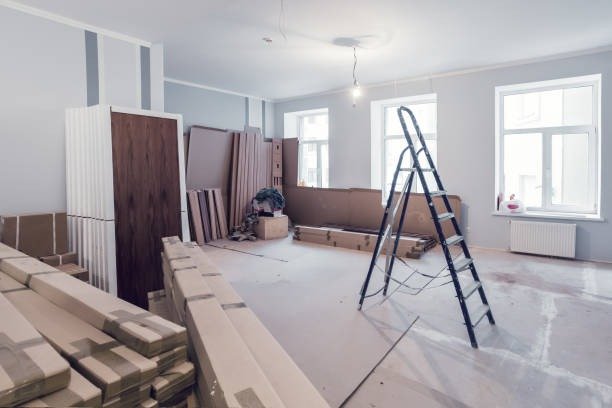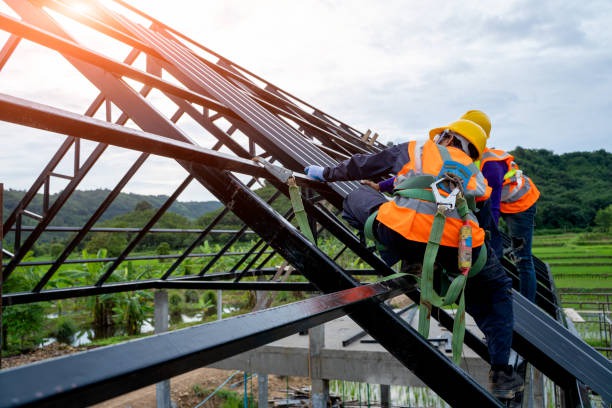Remodeling your office can give your business a fresh new look and help it run more efficiently. However, many people worry about the impact this transformation will have on daily work. If you’re gearing up for an office remodel, you’ve probably asked yourself: How much will it disrupt our operations? How can we keep productivity up? The good news is that with the right planning and approach, you can minimize disturbances and keep your business moving forward. Let’s talk about what you should expect and how you can make the process smoother for everyone involved.
Understanding the Office Remodeling Process
Before you dive in, it’s important to understand what really goes into a typical office remodeling project. Remodeling isn’t just about a few coats of paint or moving some furniture around. It can involve a total reconfiguration of your workspace, construction, new system installations, and upgrades that might affect everything from lighting to internet access. The timeline varies: it could take weeks or even months, depending on the scale. By getting a clear map of the process, you can plan more effectively to reduce workplace disruption.
Setting Clear Goals for Your Remodel
-
Increase functionality: Will the revamp help your team work better?
-
Improve comfort: Are you creating a more pleasant environment?
-
Modernize systems: Will you need advanced wiring, lighting, or security?
-
Expand space: Are you preparing for a bigger team or new departments?
Sit down with your leadership team and key staff to clarify goals and define what success looks like. When you understand your priorities, you can focus your budget and efforts where they’ll have the biggest impact and reduce unnecessary changes (and interruptions!).
Communicating With Your Employees Early
One of the most powerful ways to reduce stress and disruption during a remodel is strong communication. Give your team a heads-up well before work begins, and be transparent about how long the project will last and what parts of the office will be affected.
Tips for Keeping Employees Informed:
-
Hold dedicated meetings to explain the schedule and what to expect.
-
Provide regular updates via email, your internal platform, or all-hands catchups.
-
Share visuals, such as floor plans or renderings, to give context.
-
Explain how the changes will benefit both the business and each employee.
When people know what’s coming and why it matters, they’re much more likely to stay positive and adapt to temporary inconveniences.
Strategizing to Minimize Disruption
Designing a strategy around minimal disruption is crucial if you want to keep your business humming during construction. Some businesses find it makes sense to remodel in stages—tackling one area at a time—so there’s always space for employees to work without noise or mess nearby.
Consider These Strategies:
-
Stagger the work: Renovate during evenings, weekends, or holidays.
-
Create temporary work zones: Use flexible meeting rooms or coworking areas while primary workspaces are under renovation.
-
Embrace remote work: Increase work-from-home options for staff when construction peaks.
-
Prepare for noise: Provide headphones, quiet rooms, or staggered shifts.
Taking a flexible approach can help prevent burnout and maintain productivity during the remodeling workflow.
Coordinating With Your Contractor
Choosing the right contractor is about more than price and expertise; it’s also about finding partners who understand your business needs. During the interview stage, ask how they handle working in occupied spaces and request clear plans for mitigating disruptions. Outline your priorities—like essential facilities staying open, IT systems remaining online, or employees being shielded from dust and debris.
What to Discuss With Your Contractor:
-
Detailed construction schedule with milestones
-
Regular communication channels for project updates
-
Safety plans for employees and visitors
-
Agreed upon access times and restricted zones
Having these protocols set before the first hammer swings keeps misunderstandings to a minimum.
Maintaining Safety and Accessibility
Don’t overlook the importance of safety and accessibility during a remodel. Your employees, clients, and guests rely on a secure, navigable office. Before construction starts, map out clear access routes, emergency exits, and new signage as needed.
Key Safety Measures:
-
Block off construction areas with clear signs and physical barriers
-
Keep walkways and exits free from debris
-
Regularly review the fire alarm and emergency plans
-
Ask contractors to clean up at the end of each workday
Ensuring that safety comes first builds trust and reduces anxiety among staff.
Technology Planning During Remodeling
Moving, rewiring, or installing new systems can disrupt connectivity and reduce productivity. It’s smart to discuss your technology needs with the IT staff and your contractor early so that you can plan for interruptions.
Action Steps for Seamless Tech Transitions:
-
Back up essential data before moving any equipment
-
Test new network setups in advance
-
Provide mobile hotspots or alternative workstations
-
The schedule system moves outside normal business hours
A smooth approach to tech keeps your team connected and minimizes frustration.
Keeping Morale and Engagement High
Let’s be honest—dust, noise, and clutter can rattle anyone’s nerves. However, companies that focus on morale often come out even stronger after a remodel. Simple touches, like providing snacks, offering quiet breakout areas, or hosting regular “progress appreciation” lunches, can make a big difference.
-
Host contests for best-decorated temporary desks or “construction survival tips.”
-
Display progress photos or digital renderings of the finished space.
-
Solicit ongoing feedback and act on staff suggestions.
-
Recognize the extra effort and flexibility shown by your team.
Staying upbeat helps your people adapt and reminds them that the short-term hassles are worth the long-term gains.
Working With Construction Experts
It’s important to get the right local expertise when planning any large renovation. Many businesses seek out construction experts in San Luis Obispo when quality, efficiency, and expert advice are top priorities. These professionals can offer unique guidance based on current trends and regulations in your area, and they’re familiar with managing projects that keep businesses operational while work is underway. By leaning on experienced partners, you’ll benefit from fewer surprises and smoother project delivery.
Balancing Budget and Quality in Office Remodeling
Allocating money smartly during an office remodeling project goes far beyond picking materials or finishes. Sometimes, investing in premium materials for high-traffic areas pays off, while you might save by opting for simpler designs elsewhere. Discuss your budget openly with your contractor and designer to balance must-haves with nice-to-haves and avoid expensive surprises. Setting aside a contingency fund for unexpected issues is always wise. If costs start to climb, revisit the initial goals you set with your leadership team to make sure spending stays aligned with business priorities.
Preparing for a Smooth Transition Back to Normal
As your remodel wraps up, don’t just breathe a sigh of relief—plan for an organized move back into the refreshed workspace. This is your opportunity to celebrate wins, resolve any lingering hiccups, and ensure everyone is comfortable with the new layout or technology. Give your team a tour, answer questions, and update resources like emergency plans, directories, and the staff handbook.
Post-Remodel Checklist:
-
Share a completion walkthrough to highlight new features
-
Offer training or orientation for updated systems or layouts
-
Request feedback on the remodeling experience
-
Address any outstanding maintenance or punch-list items promptly
A thoughtful transition means your remodel delivers on its promise—energizing staff and impressing clients.
Final Thoughts
Office remodeling doesn’t have to put your business on pause. With proactive planning, honest communication, and a focus on employee well-being, you can transform your workspace while keeping disruption to a minimum. Remember: clear goals, professional partnerships, and a supportive attitude go a long way in making your remodel a positive and productive experience. When the dust settles, you’ll be ready to step confidently into a new chapter of innovation, collaboration, and growth.





